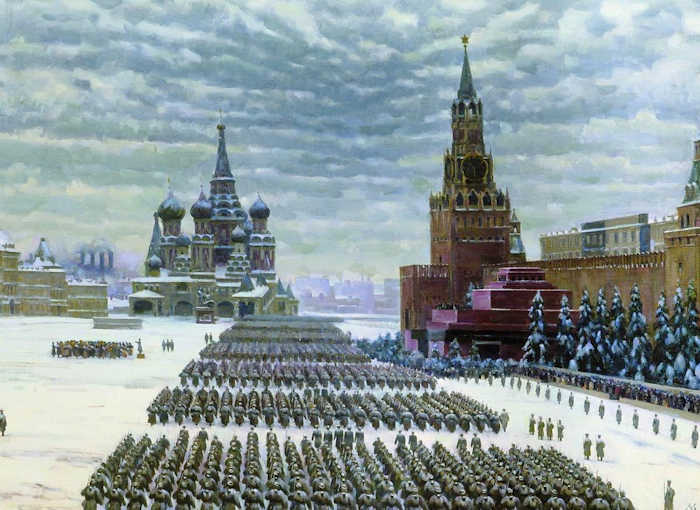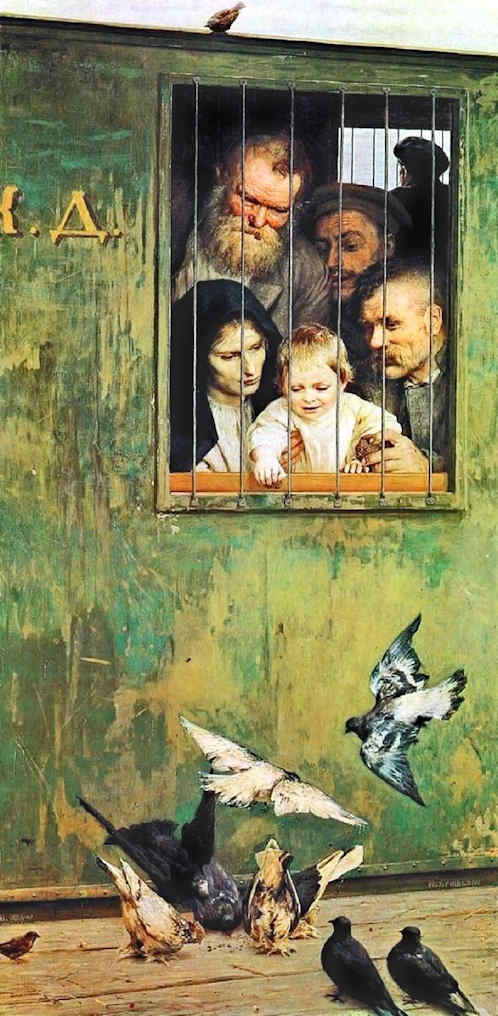|
Here was one case where socialism could shine; if they missed all other
production quotas, these they could meet and exceed. They went after
foreigners especially: "Altogether, the latest estimates, combining
the quotas and national contingents, are that 1.5 million were
arrested in these operations and about 700,000 shot. 'Beat, destroy
without sorting out,' Yezhov ordered his henchmen." (Stalin: The
Court of the Red Tsar, by Simon Sebag Montefiore,, p. 229).
Stalin himself likened his purges to those carried out by Tsar
Ivan the Terrible: "'He [Stalin] seems to have constantly compared
his Terror to Ivan the Terrible's massacre of the boyars. 'Who's
going to remember all this riffraff in ten or twenty years' time? No
one. Who remembers the names now of the boyars Ivan the Terrible got
rid of? No one.'" (Stalin: The Court of the Red Tsar, by Simon Sebag
Montefiore, p. 231). Just as the Tsars killed their competitors, the
nobles, to concentrate all power in their own hands, so Stalin
sought to eliminate any potential rivals, which meant decimating the
old Bolsheviks who had made the revolution: "Budyonny confronted
Stalin: 'If these are the Enemy, who made the Revolution?'" (Stalin:
The Court of the Red Tsar, by Simon Sebag Montefiore, p. 234). This
power elite were still occupying positions of authority, but with
the old guard out of the way, there was only Stalin left standing:
"Within a year and a half, 5 of the 15 Politburo members, 98 of the
139 Central Committee members and 1,108 of the 1,966 delegates from
the Seventeenth Congress had been arrested.. . .On some days, for
example 12 November 1938, Stalin and Molotov signed 3,167
executions." (Stalin: The Court of the Red Tsar, by Simon Sebag
Montefiore, p. 232).
Although the gangster Stalin broadened the repression, the policy
of state terrorism against the population actually goes back to the
early years of the revolution; in fact the Cheka's serial killing sprees at
the outset were even more lawless than anything that followed, when a
certain measure of terror was legalized: "Terror is a method of persuasion. .
.'The court must not exclude terror. It would be self-deception or
deceit to promise this. . .'" (Lenin, quoted p. 353, The Gulag
Archipelago, Aleksandr I. Solzhenitsyn). The atheists could not
abide any ideological dissent or deviation whatsoever; even harmless
cranks like the people who wanted to speak Esperanto were persecuted
by the Soviet regime.
This should be a familiar theme by now. Atheists like Josef Stalin cannot abide
anyone even thinking differently from themselves: ". . .anyone who
dared to weaken the power of the Soviet State 'in their thoughts,
yes even their thoughts' would be considered an Enemy and 'we will
destroy them as a clan'. . .'To the complete destruction of all
Enemies, them and their kin!' at which the magnates gave 'approving
exclamations: To the great Stalin!'" (Stalin: The Court of the Red
Tsar, by Simon Sebag Montefiore, p. 244). Evidence was not so much
wanted, just local talent eager for a chance to feel powerful:
"A less reliable way was to harness a local tool such as
Polia Nikolaenko, the 'heroic denunciatrix of Kiev,' championed by
Stalin. The specialty of this terrifying crone, responsible for the
deaths of as many as 8,000 people, was to stand up at meetings and
shriek accusations: Khrushchev saw how she 'pointed her finger and
said, "I don't know that man over there but I can tell by the look
in his eyes that he's an Enemy of the People."'" (Stalin: The Court
of the Red Tsar, by Simon Sebag Montefiore, p. 248).
Josef Stalin governed by recasting the inevitable conflicts of
interest that appear in every society as outright war, to the death, between the good folks
and diabolical traitors lurking within. Society thereupon obediently geared up on a war footing to
defeat these insidious foes. Instead of admitting state-run industry, inherently inefficient,
had blundered badly, he targeted 'saboteurs' who prevented
the machine from humming. Instead of admitting the country-side didn't want collective
agriculture, he targeted the greedy farmers
who were 'hiding' their grain and keeping it from market. Instead of
telling people he intended to transform the Soviet Union from an
oligarchy, which was the original Bolshevik form of government, to
an autocracy with himself as Tsar, he invented all manner of
bizarre plots, prosecuting his rivals in government for peculiar
ideological deviations, until his rivals were
out of the picture and he alone held power.
From its first day to its last, socialism never worked; it never
delivered the groceries. The ruling class distracted the people from
attending to the system's failures by placing in front of them one
scape-goat class after another: various ethnic groups, religious
associations, professional classes like the engineers and the
generals. Why isn't the system working? How can we get any work done
when these saboteurs keep throwing monkey wrenches into the
machinery! And they believed that. . .for decades. It is an ugly
human tendency to turn on some vulnerable individual or out-group in
this way:
|



